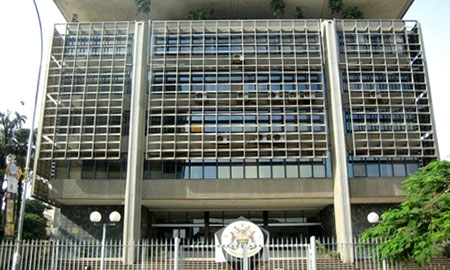Please give your insights into Uganda’s financial and economic accomplishments and challenges ahead
The Ugandan economy has combined robust real growth of output with macroeconomic stability over the long term. Since the turn of the century, the Ugandan economy has achieved average annual real growth of 7 percent. Over the same 14-year period, headline inflation averaged only 7.7 percent, and core inflation, which is the BOU’s target under its inflation-targeting light monetary policy framework, has been reduced to an average of 5.4 percent over the last two years.
In the financial sector, Uganda has attained strong growth in financial intermediation while maintaining a very sound banking system. In real terms, bank credit to the private sector has expanded five fold since the turn of the century, with average annual growth of 12 percent. The banking system as a whole has remained very soundly managed, well capitalized and profitable. As of June 2014, the average core capital to risk weighted assets ratio of commercial banks in Uganda was 20.3 percent and the average return on assets over the 12 months ending in June 2014 was 2.1 percent.
What have been your goals to enhance the performance of Uganda’s banking sector during your tenure?
My goals for the banking sector are motivated by the statutory prudential responsibilities of the BOU as bank regulator. The primary prudential objectives of the BOU are to protect the interests of depositors and to prevent financial instability. As I have just noted, the banking system as a whole is in a very sound financial condition, which is partly the result of strong bank regulation and supervision by the BOU. However, that does not mean that no bank will ever fail; rather it means that the BOU, as the bank regulator, will aim to intervene to resolve failing banks while they still have sufficient resources to repay depositors in full. This was done very recently, in July, when the BOU closed a small bank and transferred its deposits to a larger, sound bank.
What kind of measures have you introduced to curb inflation, stabilize the Shilling’s fluctuations and to increase its competitiveness?
The BOU uses an inflation-targeting light monetary framework, and has a primary target for core inflation of 5 percent over the medium term. To achieve this target, the BOU sets a policy interest rate. The setting of the policy interest rate is determined mainly by a forecast for core inflation. If core inflation is forecast to rise above target over the medium term, the BOU will normally raise the policy interest rate and vice versa.
The BOU does not use monetary policy to target the exchange rate, but it does use sterilized interventions in the foreign exchange market (interventions which do not alter the monetary policy stance) to dampen volatility in the exchange rate and to lean against sustained overvaluation of the real exchange rate.
The BOU implements its monetary policy by influencing liquidity in the money market, but the aim of these interventions is to ensure that money market interest rates are aligned with its policy rate, not to ensure a liquid environment. The BOU does not have a strategy to “ensure capital flows”. Uganda has an open capital account and capital flows are market determined.
What about your strategy to diversify Uganda’s debt portfolio?
The Government’s debt strategy is set out in the Public Debt Management Framework, 2013, which is published by the Ministry of Finance, Planning and Economic Development. The key objectives of the strategy are: to meet Government’s financing requirements at minimum cost, subject to a prudent degree of risk; to ensure that the level of public debt remains sustainable; and to promote the development of domestic financial markets.
Can you tell us the about strategy to achieve more efficient risk management and better credit allocation to push export oriented and adding value industries?
The implementation of proper risk management systems by banks are required under the prudential regulations issued by the BOU. The BOU does not attempt to direct the allocation of credit to any sectors of the economy; credit allocation is a determined by the market.
Please discuss how Bank of Uganda acts as a crucial institution to gain investors’ confidence
The crucial contribution which the BOU makes to gaining investors’ confidence is by ensuring that macroeconomic stability is maintained. An unstable macroeconomic situation makes long term planning by investors very difficult which increases the risks for investors. Hence to attract long term investment, it is imperative to maintain macroeconomic stability and to convince the business sector that macroeconomic
stability will continue to be maintained over the long term. That is one of the main reasons why the BOU monetary policy makes low inflation its primary policy target.
What is the role of the Bank of Uganda in ensuring and enhancing the transparent and competitive business environment?
The role of the BOU is to implement monetary policy and supervise the banking system. Outside of the banking system, where the BOU has issued regulations to commercial banks stipulating the type of information about financial products which must be given to customers, the BOU does not play any role with respect to the transparency and competitiveness of the business environment.
What are the competitives advantages of Uganda’s banking sector?
The competitive advantage of Uganda’s banking sector is its knowledge of the domestic market, especially the market for loans. There are many sectors of the Ugandan economy that are potentially attractive for private sector investors. These include agro-industries such as food processing, manufacturing industries such as building and construction materials, the oil industry, and a range of service industries such as tourism, housing, education, health services, non bank financial services such as insurance, transport and telecommunications.

0 COMMENTS